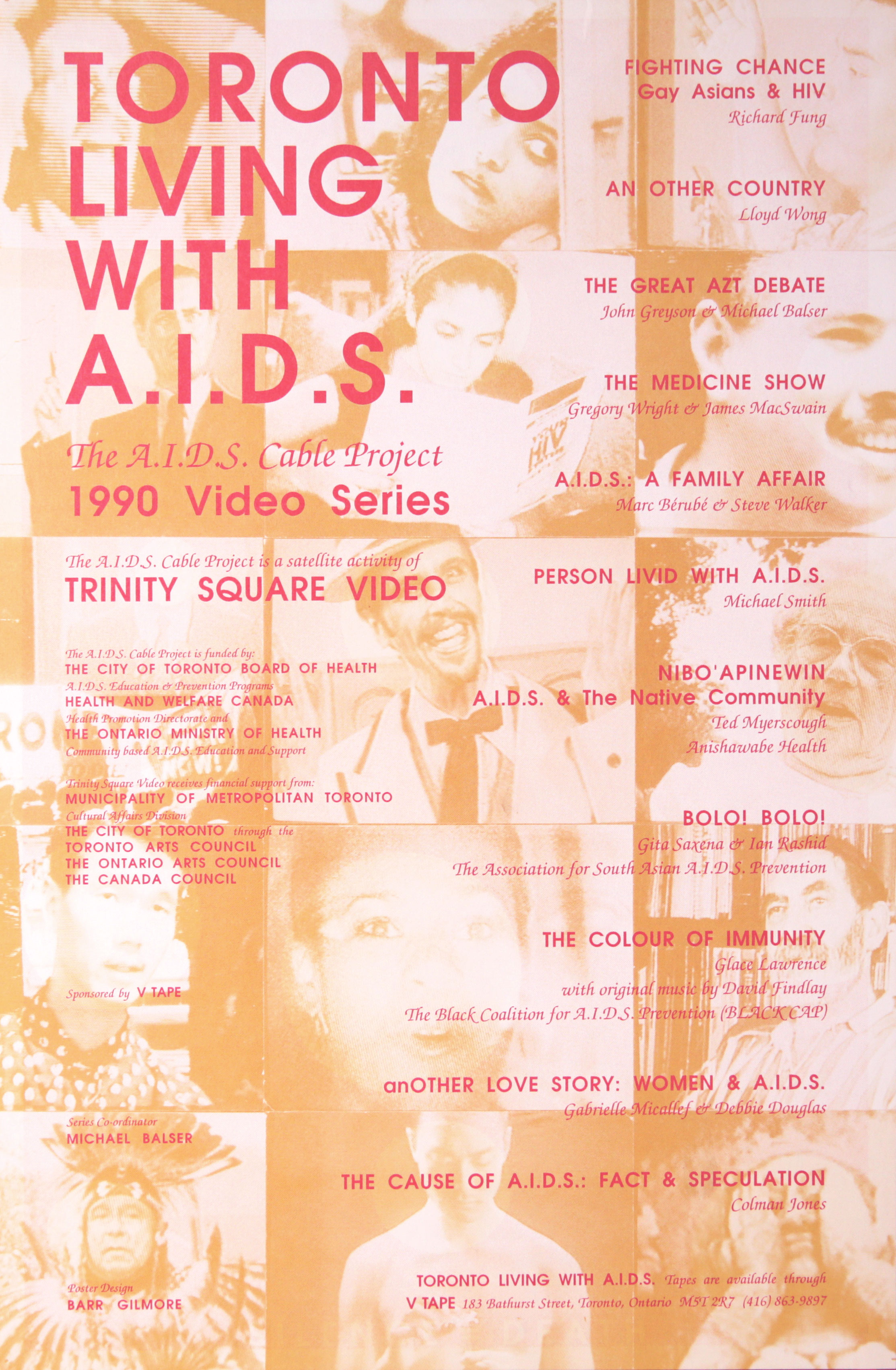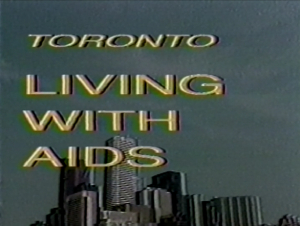Ryan Conrad, a long-time member of the AAHP team, has recently published an article titled “Cable Access Queer: Revisiting Toronto Living With AIDS (1990-1991)” in the open-access media studies journal Jump Cut. The article analyzes the Canadian AIDS activist community television series Toronto Living With AIDS and provides insight into how this extraordinary program came to be, how it was received by various imagined publics, how it ended, and why revisiting this series is useful for today’s video activists. The article contains nearly 100 images and archival documents about the public access show and AIDS activist media in Canada. An excerpt is included below:
“AIDS activists changed the world. They organized, strategized, and put their bodies on the line to change their medical, social, and political circumstances. Importantly, AIDS activists in North America did all this with early consumer-grade video technologies in hand. From the committed documentary to the experimental short, AIDS activists engaged in change-making at the level of culture through moving images in new ways and on a scale not possible during previous social movements. Due to the parallel development of increasingly affordable consumer grade video technologies alongside the rapidly expanding AIDS crisis, scholars, activists, and media makers have an expansive decentralized archive from which to consult, study, and make new meaning. The importance of revisiting and maintaining this archive, as film scholar Roger Hallas notes, is not merely to preserve the past for the sake of history, but to attend to the stories that emerge from AIDS activist cultural archives and their revelatory potential for historical consciousness in the present.
We live at a moment of great interest and reinvestment in the history of AIDS activism in the U.S. and Canada. These histories are undergoing a storytelling process through which certain accounts begin to take canonical form. While this process of canonization makes AIDS activist histories more available to those who did not experience them firsthand, this process also leads to the occlusion of complex, lesser known, and marginalized aspects of the histories at stake. AIDS activist histories in the U.S. are being solidified through autobiographies, memoirs, oral history projects, massive art retrospectives such as the 2015-2017 touring exhibition “Art AIDS America,” and recently-produced historical dramas, television movies, and activist documentaries, most notably the Oscar-nominated films How to Survive a Plague (2012) and Dallas Buyers Club (2013).
The alternative media work of Canadian AIDS activists is largely absent from these more well-known U.S. history projects. Furthermore, scholarship on alternative media practices in Canada largely occludes or only briefly mentions the history of AIDS activist media and the contribution of AIDS activist media makers. This paper remedies this oversight by providing a complementary analysis of Canadian-made AIDS activist videos from the Toronto Living With AIDS (TLWA) cable access project, thereby facilitating future possibilities for comparative scholarly work examining the histories of AIDS activist media globally, and across the U.S.-Canadian border in particular.”
To continue reading, check out the full article on Jump Cut‘s website.

